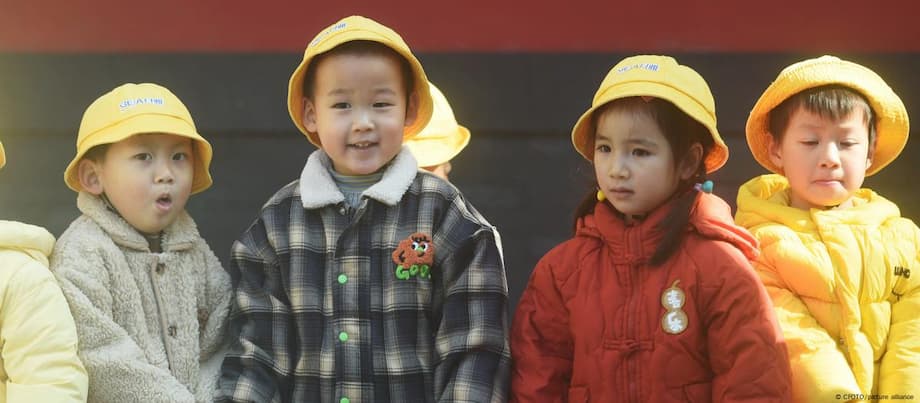China’s New Childcare Subsidy: A Bold Step Amid a Demographic Crisis
China has launched a nationwide childcare subsidy, offering families 3,600 yuan (about $500) per child under the age of three each year. This unprecedented move, announced in 2025 and applied retroactively from January 1, is the latest and most direct attempt by the Chinese government to address a rapidly declining birth rate and looming demographic challenges. The policy is expected to benefit more than 20 million families, marking a significant shift in China’s approach to family support and population management.
- China’s New Childcare Subsidy: A Bold Step Amid a Demographic Crisis
- Why Is China’s Population Shrinking?
- What Does the New Subsidy Offer?
- Regional Variations: Local Governments Experiment with Bigger Incentives
- Why Cash Alone May Not Be Enough
- Beyond Subsidies: Building a Fertility-Friendly Society
- Public Reaction: Will Families Have More Children?
- In Summary
The new subsidy comes as China faces its third consecutive year of population decline. In 2024, only 9.54 million births were recorded—half the number seen in 2016, the year China ended its decades-long one-child policy. The country’s population shrank by 1.39 million in 2024, and for the first time in modern history, China lost its status as the world’s most populous country to India. With nearly 310 million people aged 60 and over, and United Nations projections suggesting the population could fall to 800 million by 2100, the stakes are high for China’s economic and social future.
Why Is China’s Population Shrinking?
China’s demographic crisis is the result of several intertwined factors. The one-child policy, implemented from 1980 to 2015, dramatically reduced birth rates and altered family structures. Even after the policy was relaxed—first to allow two children in 2016, and then three in 2021—birth rates continued to fall. The fertility rate in 2024 dropped to just 1.01 births per woman, far below the replacement level of 2.1 needed to maintain a stable population.
But policy changes alone have not been enough to reverse the trend. Young Chinese couples are increasingly delaying marriage and parenthood, or opting out altogether. The reasons are complex:
- High cost of living: Urban housing, education, and childcare expenses have soared, making it financially daunting to raise children.
- Career pressures: Both men and women face intense competition in the job market, with many women concerned about the impact of motherhood on their careers.
- Changing social norms: More women are pursuing higher education and professional ambitions, challenging traditional expectations around marriage and childbearing.
- Gender inequality: Persistent discrimination and lack of support for working mothers make balancing family and career difficult.
As a result, marriage rates have hit record lows. In 2023, China saw a brief post-pandemic rebound in marriages, but the first half of 2024 saw a 12.7% drop compared to the previous year. Surveys suggest that many young people remain hesitant to marry or have children, citing economic uncertainty and lifestyle preferences.
What Does the New Subsidy Offer?
The national childcare subsidy provides 3,600 yuan ($500) per year for each child under three, regardless of whether the child is the first, second, or third in the family. The policy is funded by the central government, rather than local authorities, signaling a new level of commitment to addressing the demographic challenge. Partial subsidies are also available for children under three born before 2025.
According to the National Health Commission, the goal is to directly reduce the cost of childbirth and parenting, making it more affordable for families to have children. The policy is expected to inject a total of 117 billion yuan into the economy in its first year, according to Citi Research, and is seen as both a population and a consumption policy.
However, experts caution that the subsidy amount—while a milestone in direct household support—is relatively modest compared to the actual costs of raising a child in China’s major cities. The annual $500 payment is unlikely to offset the high expenses of housing, education, and childcare, especially in urban centers like Beijing and Shanghai.
Regional Variations: Local Governments Experiment with Bigger Incentives
Before the national subsidy, more than 20 provincial-level administrations had already rolled out their own pro-natal policies, with varying degrees of generosity and success. Some of the most notable examples include:
- Hohhot (Inner Mongolia): Offers up to 100,000 yuan ($14,000) per newborn for couples with three or more children, paid out over ten years. The city also provides 10,000 yuan for the first child and 50,000 yuan for the second, along with medical and nutritional support for mothers.
- Shenyang (Liaoning): Provides a monthly subsidy of 500 yuan for families with a third child until the child turns three.
- Tianmen (Hubei): Implemented a package of subsidies, housing rewards, and maternal leave allowances, resulting in a 17% increase in newborns in 2024 after eight years of decline.
- Hangzhou (Zhejiang): Offers a one-time payment of 25,000 yuan for couples who have a third child.
These regional policies often include additional benefits such as extended maternity and paternity leave, preferential access to housing, and improved childcare services. For example, Sichuan province has proposed increasing marriage leave from 5 to 25 days and extending maternity leave from 60 to 150 days to foster a more family-friendly environment.
Are Local Subsidies Working?
Some cities have reported modest increases in birth rates following the introduction of these incentives. In Tianmen, the number of newborns rose by 17% in 2024, breaking an eight-year streak of decline. Baoji in Shaanxi province saw a 10.7% year-over-year increase in newborns in the first half of 2024, while Guangdong province reported a 1.4% rise in hospital-recorded births.
However, experts caution that these bumps may be temporary. Factors such as the Year of the Dragon—a culturally auspicious time to have children—may have contributed to the increase. Moreover, the long-term trend remains downward, with many regions still experiencing declines. For instance, Nanning in Guangxi reported a 16.8% year-over-year decrease in births in the first half of 2024.
Why Cash Alone May Not Be Enough
Despite the flurry of subsidies and incentives, most analysts and demographers remain skeptical that financial handouts alone can reverse China’s demographic decline. The core challenges are deeply rooted in economic, social, and cultural factors.
Dr. Mi Hong, director of the Institute for Population and Development Studies at Zhejiang University, explained that while subsidies can ease financial pressure, they are only one piece of a much larger puzzle.
“Providing childcare subsidies is relevant, but without broader support—such as affordable childcare, extended parental leave, and job protections for women—the effect on fertility is likely to remain minimal.”
International experience supports this view. Other East Asian countries, such as South Korea and Japan, have also introduced generous family subsidies and incentives, yet their birth rates remain among the lowest in the world. Once women gain reproductive autonomy and broader career opportunities, they are unlikely to reverse their choices for the sake of national policy goals.
Structural Barriers: Gender Roles and Workplace Discrimination
One of the most significant barriers to higher birth rates in China is the persistent expectation that women bear the primary responsibility for childcare and household duties. This traditional gender role, combined with workplace discrimination against mothers, makes it difficult for women to balance family and career aspirations.
A recent study by Fudan University and the University of Hong Kong found that subsidizing men’s participation in childcare and household chores could have a greater long-term impact on fertility rates than focusing solely on mothers. The researchers argued that policies encouraging fathers to take a more active role in parenting could help shift social norms and reduce the burden on women.
Currently, Chinese law restricts single women from accessing certain reproductive technologies, such as egg freezing, and unmarried women over 27 are often labeled as “leftover women,” facing social stigma. These factors further discourage young women from marrying and having children.
Beyond Subsidies: Building a Fertility-Friendly Society
Recognizing the limitations of cash incentives, the Chinese government has begun to implement a broader range of policies aimed at supporting families and creating a more fertility-friendly environment. These include:
- Expanding childcare services: Community-based childcare centers in cities like Suzhou now offer full-day, half-day, and temporary care options for infants and young children.
- Extending maternity and parental leave: Maternity leave has been extended to over 158 days in many regions, with additional spousal and parental leave to support family cohesion.
- Improving healthcare: Large hospitals are now required to provide epidural anesthesia during childbirth, and free health screenings for newborns are more widely available.
- Housing and education support: Some cities offer preferential access to housing and educational resources for families with multiple children.
These measures aim to reduce the time and opportunity costs associated with having children, particularly for working mothers. However, experts argue that more needs to be done to address the root causes of low fertility, such as gender inequality, job insecurity, and the high cost of living.
The Aging Population: A Looming Challenge
While much attention is focused on boosting birth rates, China’s rapidly aging population presents an equally urgent challenge. By 2035, the number of people aged 60 and over is expected to exceed 400 million. This shift will place enormous pressure on the pension system, healthcare services, and the labor market.
In response, the government has announced plans to raise the retirement age, increase pension benefits, and expand elderly care services, particularly in rural areas. Some experts suggest that resources might be better spent on supporting the aging population, rather than trying to reverse the demographic tide through pronatalist policies alone.
Public Reaction: Will Families Have More Children?
Initial reactions to the new subsidy have been mixed. Some parents welcome the financial support, saying it helps ease the burden of childcare costs. Yang Lixin, a 30-year-old mother in Hohhot, said,
“The subsidies can reduce the financial costs, especially for maternity and childcare. The policy made us more assured in making our mind to having a second child.”
However, many young couples remain unconvinced. Surveys indicate that the subsidy is not enough to offset the broader economic and social pressures discouraging childbearing. Zichun Huang, a China economist at Capital Economics, noted,
“The sums involved are too small to have a near-term impact on the birth rate or consumption. But this policy could pave the way for more fiscal transfers in the future.”
Demographer Emma Zhang of Yale University echoed this sentiment, emphasizing the need for sustained investment in affordable childcare, parental leave, and job protections for women.
In Summary
- China has introduced a nationwide childcare subsidy of 3,600 yuan ($500) per child under three, aiming to boost its falling birth rate.
- The policy is part of a broader response to a demographic crisis marked by declining births, an aging population, and shrinking workforce.
- Local governments have experimented with even larger incentives, but results have been mixed and often temporary.
- Experts warn that cash subsidies alone are unlikely to reverse the trend, citing high costs of living, career pressures, and persistent gender inequality as major barriers.
- Broader policies—such as expanded childcare services, extended parental leave, and workplace reforms—are needed to create a truly fertility-friendly society.
- China’s experience mirrors that of other East Asian countries, where financial incentives have had limited impact on birth rates.
- The challenge of supporting an aging population remains a parallel and pressing concern for policymakers.




